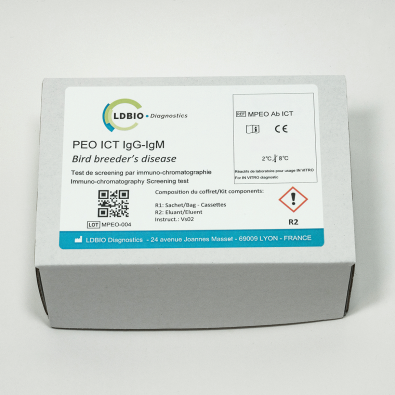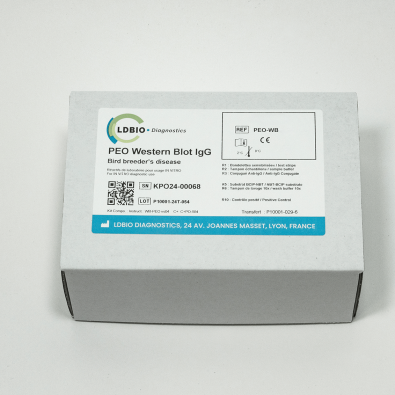Avian Antigens
Bird Breeder’s lung Disease (BBD) is the most frequent form of Hypersensitivity Pneumonitis (HP, or Extrinsic Allergic Alveolitis (EAA)) (Ismail et al., 2006, Rouzet et al., 2014). HP are a group of immunoallergic pulmonary affections. They are caused among predisposed patients by the repeated inhalation of antigens, non self molecules recognized and targeted by the immune system. These particles are majority organic (micro-organisms, animal or vegetal proteins…) but can also come from chemicals (Chauvin et al., 2021). For BBD, antigens are avian proteins, found in birds’ dejections and in their close environment (feathers and dust of cages for instance). Its epidemiology is poorly known, but the literature estimates that a large part of breeders and owners is impacted, from 5 to 21% according to the paper (Christensen et al., 1975, Lopez & Salvaggio, 1987, Rodriguez de Castro et al., 1993).
Bird Breeder’s lung Disease has two forms : acute and chronic, which can itself be divided in fibrotic and non-fibrotic forms (Costabel et al., 2020, Chan et al., 2012).
- Acute form appears after a strong exposure to avian proteins. It is characterized by shortness of breath and cough episodes, accompanied by fever, chills, faintness, myalgia and headaches. Symptoms appear 4 to 8 hours after exposure to the antigen and regress 24 hours after exposure stops (Bourke & Boyd, 1997, Chan et al., 2012).
- Chronic form can be caused by continuous exposure to a weak level of antigen. It’s transposed in patients by an insidious beginning of dyspnea, fatigue and cough, with a loss of weight which adds up, which can lead to the development of an irreversible pulmonar fibrosis. Fibrotic form is associated with a higher death rate compared to non-fibrotic form (Bourke & Boyd, 1997, Ohshimo et al., 2012).
In addition to these two forms, another entity is described, corresponding to avian sensitization. Patients show immune activation biological signs against avian antigens, but without clinical manifestation. This entity, although less precise, might regroup patients at risk to develop BBD, for whom medical care (reinforced monitoring and risk avoidance) would be justified.
BBD patients’ treatment strategy relies on environment control. It requires a suppression of the antigen, most effective measure in the medical care of the pathology, as no specific treatment is available. Corticosteroids can be administered for the most severe cases (Chan et al., 2012).
In addition to the clinical assessment, diagnosis relies on imagery and cytological and biological data, mainly through serology. Among serological techniques, indirect hemagglutination, immunofluoroenzimatic methods and electro syneresis are the most frequently used (Baquer, 2020). Immunoblot as well as immunochromatographic tests are a good answer to the lack of standardization of some of them.
{{ productCount ? productCount : 'Showing all 5 results' }}




